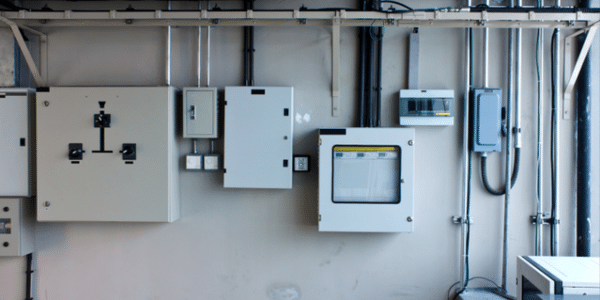The Role of Electrical Fiberglass Boxes in Renewable Energy Systems: An Overview
6/7/20244 min read


Introduction to Electrical Fiberglass Boxes
Electrical fiberglass boxes are essential components in modern electrical systems, serving as enclosures for electrical connections, wiring, and devices. These boxes are constructed from fiberglass-reinforced plastic (FRP), a composite material known for its remarkable properties. The unique composition of fiberglass includes fine fibers of glass embedded in a resin matrix, which imparts a combination of lightweight durability and high tensile strength. This makes fiberglass an ideal material for electrical enclosures, especially in demanding environments.
One of the primary advantages of electrical fiberglass boxes is their resistance to corrosion. Unlike metal enclosures that may rust or degrade when exposed to moisture and other environmental factors, fiberglass remains unaffected. This property is particularly beneficial in renewable energy systems, which are often deployed in harsh outdoor environments. Additionally, fiberglass is non-conductive, providing an extra layer of safety by preventing electrical shock hazards. Its high strength-to-weight ratio also ensures that the boxes can withstand physical impacts and harsh weather conditions without adding unnecessary weight to the installation.
There are various types of electrical fiberglass boxes available on the market, catering to different needs and specifications. Common types include junction boxes, control panels, and terminal enclosures. Each type is designed to house specific electrical components and connections, ensuring optimal protection and organization. Standard features of these boxes typically include watertight seals, UV resistance, and provisions for easy mounting and access. Some models may also offer additional features such as lockable covers for enhanced security and transparent lids for easy inspection.
In summary, electrical fiberglass boxes offer a versatile and robust solution for housing electrical components in a wide range of applications. Their unique properties make them particularly suited for renewable energy systems, where durability, safety, and environmental resistance are paramount. As we explore further into their role in renewable energy systems, it becomes evident why they are a preferred choice for many engineers and installers.
Advantages of Using Electrical Fiberglass Boxes in Renewable Energy Systems
Electrical fiberglass boxes play a pivotal role in the efficacy and sustainability of renewable energy systems, such as solar, wind, and hydroelectric power installations. One of the primary advantages of utilizing fiberglass boxes lies in their exceptional ability to protect sensitive electrical components from harsh environmental conditions. These boxes offer superior resistance to corrosion, moisture, and UV radiation, which are common challenges in outdoor and harsh environments. This robust protection ensures that the electrical systems remain operational and reliable over extended periods, significantly reducing the risk of downtime due to environmental factors.
Furthermore, fiberglass boxes contribute to the overall efficiency of renewable energy systems. They provide a durable and safe housing for electrical connections and control mechanisms, reducing the likelihood of electrical faults and short circuits. The non-conductive nature of fiberglass adds an extra layer of safety by minimizing the risk of electrical shock or fire hazards. This is particularly critical in renewable energy systems where the integrity of electrical connections is paramount for optimal performance.
In terms of cost-effectiveness, electrical fiberglass boxes are an economical choice compared to traditional materials like metal. Fiberglass is lightweight yet strong, which not only simplifies the installation process but also reduces labor costs. Additionally, the material's longevity and minimal maintenance requirements lead to significant cost savings over the lifespan of the renewable energy systems. Unlike metal boxes, fiberglass does not rust or corrode, eliminating the need for frequent replacements or repairs. This durability and low maintenance make fiberglass boxes an attractive option for long-term investments in renewable energy infrastructure.
Overall, the deployment of electrical fiberglass boxes in renewable energy systems ensures enhanced protection, improved efficiency, and cost-effectiveness. These attributes collectively contribute to the reliability and sustainability of renewable energy projects, supporting the broader goal of a cleaner and more efficient energy future.
Case Studies and Applications
Electrical fiberglass boxes have become instrumental in the deployment and operation of renewable energy systems worldwide. Their robustness, lightweight nature, and resistance to harsh environmental conditions make them an ideal choice for housing electrical components in renewable energy projects. This section delves into real-world examples and case studies that highlight the pivotal role these boxes play in the renewable energy sector.
One notable case is the installation of solar power systems in the deserts of the southwestern United States. Here, the electrical fiberglass boxes have been vital in protecting sensitive electrical components from extreme temperatures and sand. The boxes' resilience to UV radiation and thermal stability have significantly increased the longevity and reliability of the solar power systems, ensuring uninterrupted power supply to remote areas.
In Europe, a wind farm project in the North Sea faced the challenge of corrosive salty air and high humidity levels. The use of electrical fiberglass boxes proved to be a game-changer. These boxes provided exceptional resistance to corrosion and harsh weather conditions, safeguarding the electrical systems and minimizing maintenance costs. This project underscored the importance of durable, non-corrosive materials in offshore renewable energy installations.
In Asia, a large-scale hydroelectric power project in the mountainous regions of Nepal utilized electrical fiberglass boxes to protect electrical junctions and control units. The rugged terrain and varying climatic conditions posed significant challenges, but the fiberglass boxes' ability to withstand physical impacts and environmental stress ensured the project's success. The boxes' lightweight nature also facilitated easier transportation and installation in such remote locations.
Looking ahead, the renewable energy sector is poised for further advancements. Innovations in the design and materials of electrical fiberglass boxes could lead to even greater efficiency and durability. For instance, integrating smart technology within these boxes could enable real-time monitoring and predictive maintenance, enhancing the reliability and performance of renewable energy systems.
These case studies illustrate the critical role that electrical fiberglass boxes play in overcoming environmental challenges and ensuring the robustness of renewable energy systems. As the demand for renewable energy continues to grow, the importance of these boxes in safeguarding and optimizing electrical infrastructure cannot be overstated.
